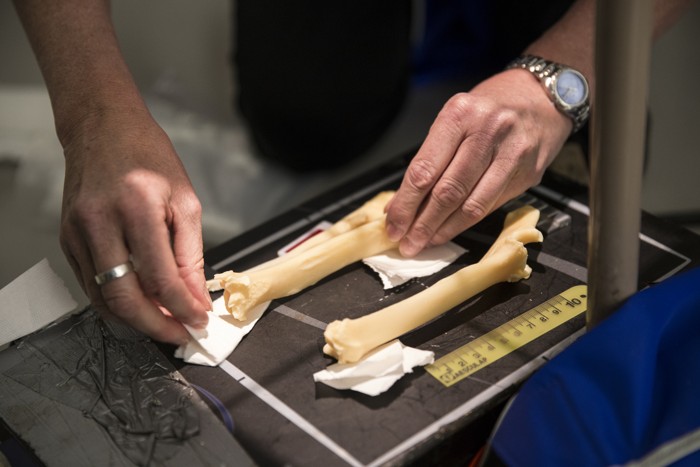Dolly the sheep turned into the first animal to be cloned from an adult cell, and like many firsts, she got here to face in for all of her variety.
So when scientists suspected she had brief telomeres—stretches of DNA that invariably shorten with age—people puzzled if it was as a result of she was cloned from an grownup cellphone. When she began to limp at age five, headlines mentioned that her arthritis "dents religion in cloning." And when she died at age six—as the result of a common lung virus that also killed different sheep in her barn—her short existence once more grew to be a parable about cloning. a definite narrative took grasp.
Then last 12 months, Kevin Sinclair, a developmental biologist at the college of Nottingham, published a paper about several clones together with Dolly's four "sisters," who were made out of the same cellphone line as Dolly and lived to the old age of eight (about 70 in human years). They had been reasonably in shape for his or her age. So of route, he kept getting questions, like if these animals are so healthy, then why changed into Dolly so unhealthy? It changed into Dolly that every person cared about.
Sinclair would element out that Dolly become not so unhealthy. but the questions inspired his group to go looking for Dolly's health statistics from the early 2000s. The statistics, however, had been misplaced. "every thing has moved on. individuals had moved away, and individuals are doing different issues," says Sinclair. but after her death in 2003, Dolly's bones were turned over to the countrywide Museum of Scotland. Sinclair's group acquired permission to analyze them—along with the bones of Megan and Morag, two sheep cloned from non-grownup cells who have been prototypes for Dolly, and Dolly's naturally conceived daughter Bonnie.
A group of veterinarians scored X-rays of the bones for indications of arthritis. Megan and Bonnie, who had died at the ripe old ages of 13 and nine, respectively, did certainly have indications of arthritis, which turned into usual for his or her age. Megan, who had died at age four in an past outbreak of same lung virus that killed Dolly, didn't. Even Dolly's knee didn't demonstrate signals of arthritis.
 developing an X-ray of a cloned sheep's bones (university of Nottingham)
developing an X-ray of a cloned sheep's bones (university of Nottingham)Arthritis additionally influences the delicate tissue in a joint, so Sinclair notes the bones alone do not aspect to a conclusive prognosis or lack thereof. (And Dolly in fact did limp.) but the typical set of data from Megan, Morag, and Bonnie as well as Dolly's elderly sister clones imply arthritis isn't any more normal amongst clones than ordinary sheep. Fears about prematurely getting old clones can be enormously exaggerated. "We felt the record necessary to be set straight," says Sinclair.
Even the fears about Dolly's too-brief telomeres haven't quite borne out. Telomeres are repetitive DNA sequences on the ends of chromosomes, and they're shortened every time a mobilephone divides. In 1999, scientists published statistics suggesting Dolly's telomeres had been too brief for her age. seeing that then, scientists have cloned an entire menagerie of animals: mice, horses, cattle, pigs, canines, and so forth. reviews of their telomere lengths have grew to become up every feasible outcome: Clones have shorter telomeres, clones have longer telomeres, and clones have normal telomeres—counting on the species or cloning technique.
Clones do have entertaining health issues, simply now not those that dominated headlines about Dolly. Clones are much less prone to make it to term in being pregnant, and when they are born, they are more likely to be a little maladjusted. "You need to baby them—provide them oxygen, supply them glucose except they normalize," says George Seidel, who stories animal-reproduction technologies at Colorado State school. The clones that make it to adulthood are generally pretty average. but that makes it extraordinarily costly to clone livestock, on the order of $20,000 every. regardless of an awful lot ado about cloned meat, cloning is not a cost-effective means to supply cattle for meat or milk.
It does have niche applications in the cattle business, notwithstanding, like recreating million-greenback bulls with extraordinarily useful genes. Seidel, who additionally has an cattle ranch, buys semen from last answer 2, the clone of the famed sire final reply who died in 2014. Semen from the right bull is also enormously positive to the dairy industry. "You've probably had some cheese from the offspring of a clone," says Seidel. however specific clones aren't bought for food in the united states.
related StoryOf Clones and Clowns
For the entire attention Dolly as soon as attracted, cloning itself has not radically altered the world. The research that created her did teach scientists an awful lot about how embryos will also be manipulated, which has inspired new strains of research into stem cells.
Dolly's four sister clones—Daisy, Debbie, Denise, and Dianna—had been definitely euthanized closing yr. Sinclair's community is still studying their preserved cells and tissues for answers to query just like the unresolved debate over telomere length. nonetheless it's the end of a certain period. "You get to grasp them very well," says Sinclair about Daisy, Debbie, Denise, and Dianna. "even if they're clones they have their personal personalities, and here is a vital aspect to make." They may have began with the same DNA as Dolly, however they had been now not the equal as her.
Komentar
Posting Komentar